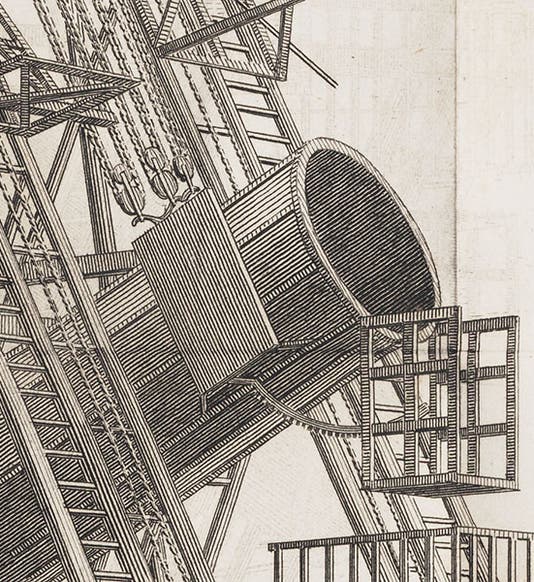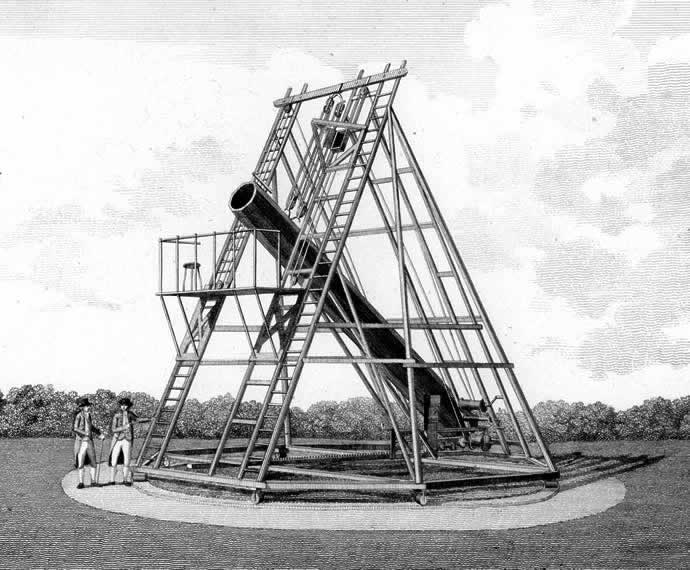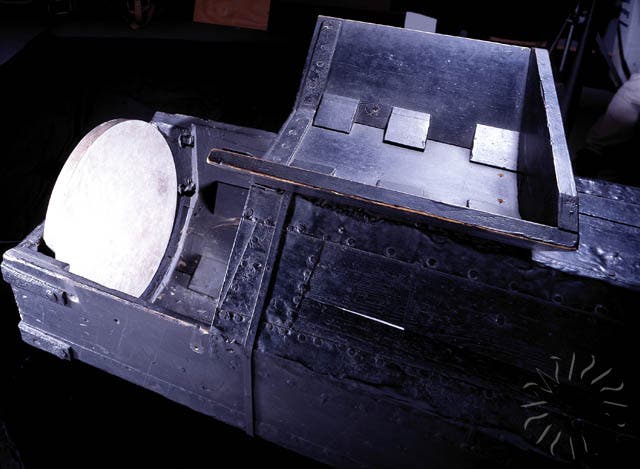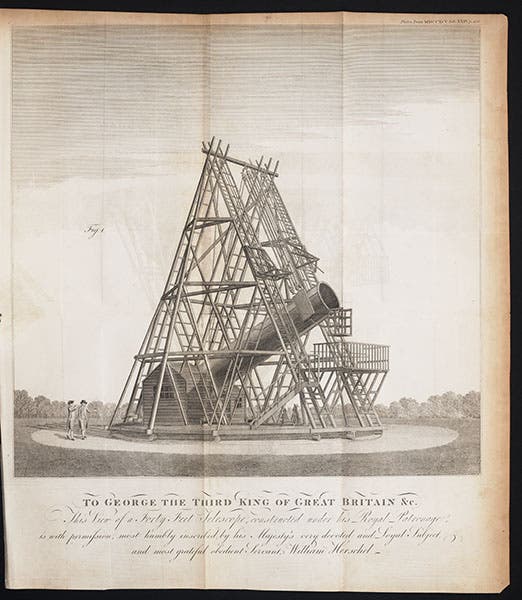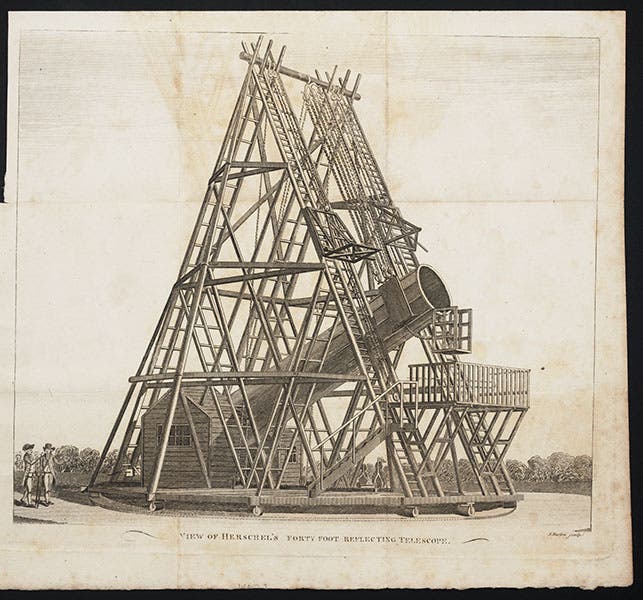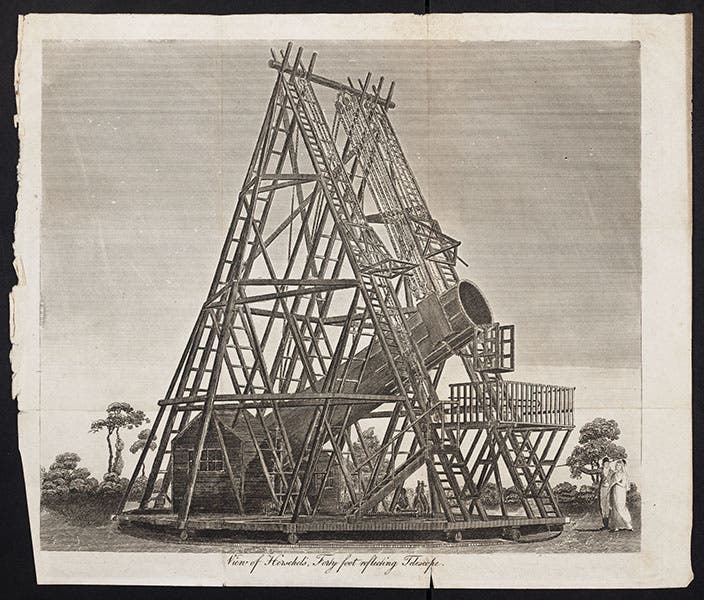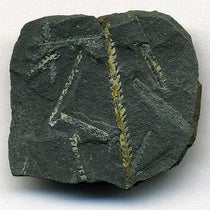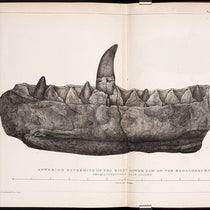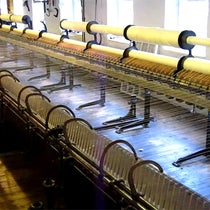Scientist of the Day - William Herschel
William Herschel, an English telescope builder and astronomer, was born Nov. 15, 1738. Two year’s ago, we celebrated Herschel’s birthday by discussing his first telescopes, with which he discovered the planet Uranus in 1781, with a promise that we would return one day to discuss the larger telescopes that he subsequently constructed. Today is that day.
In 1782, Herschel installed a 20-foot telescope with an 18” mirror outside his house in Datchet, not too far from Windsor Castle (second image). He used this to begin his nebular studies, and to discover two moons around Uranus. To view the image, Herschel had to ride in a chair at the high end of the tube, which made astronomical viewing not only exhilarating, but dangerous. The wooden tube of the 20-footer still survives at the National Maritime Museum and was loaned to the Smithsonian Institution for an exhibition some years back (third image).
Still not satisfied, Herschel then constructed a telescope with a 40-foot tube and a 48" mirror, a truly gargantuan instrument by the standards of the day. This was installed at his new house in Slough in 1789 and was used to continue his nebula studies, and also to discover two new moons around Saturn, Enceladus and Mimas. The 40' telescope was a trifle unwieldy, as it required an enormous scaffold to support it, and a large circular raceway to allow it to rotate.
We have three original engravings of the 40-foot telescope in our collections, and we thought we would show all three, as an example of how engravings can differ, even when they all have the same source. The original (fourth and first images) appeared in the Philosophical Transactions of the Royal Society of London in 1795; the other two were published in the first two editions of an anonymous treatise, Wonders of the Telescope, in 1805 and 1809.
In 1834, William’s son John took the 20-foot telescope to South Africa to observe the southern skies. You can see it, installed on Table Mountain, as the first image when John was our Scientist of the Day.
Dr. William B. Ashworth, Jr., Consultant for the History of Science, Linda Hall Library and Associate Professor, Department of History, University of Missouri-Kansas City. Comments or corrections are welcome; please direct to ashworthw@umkc.edu.

